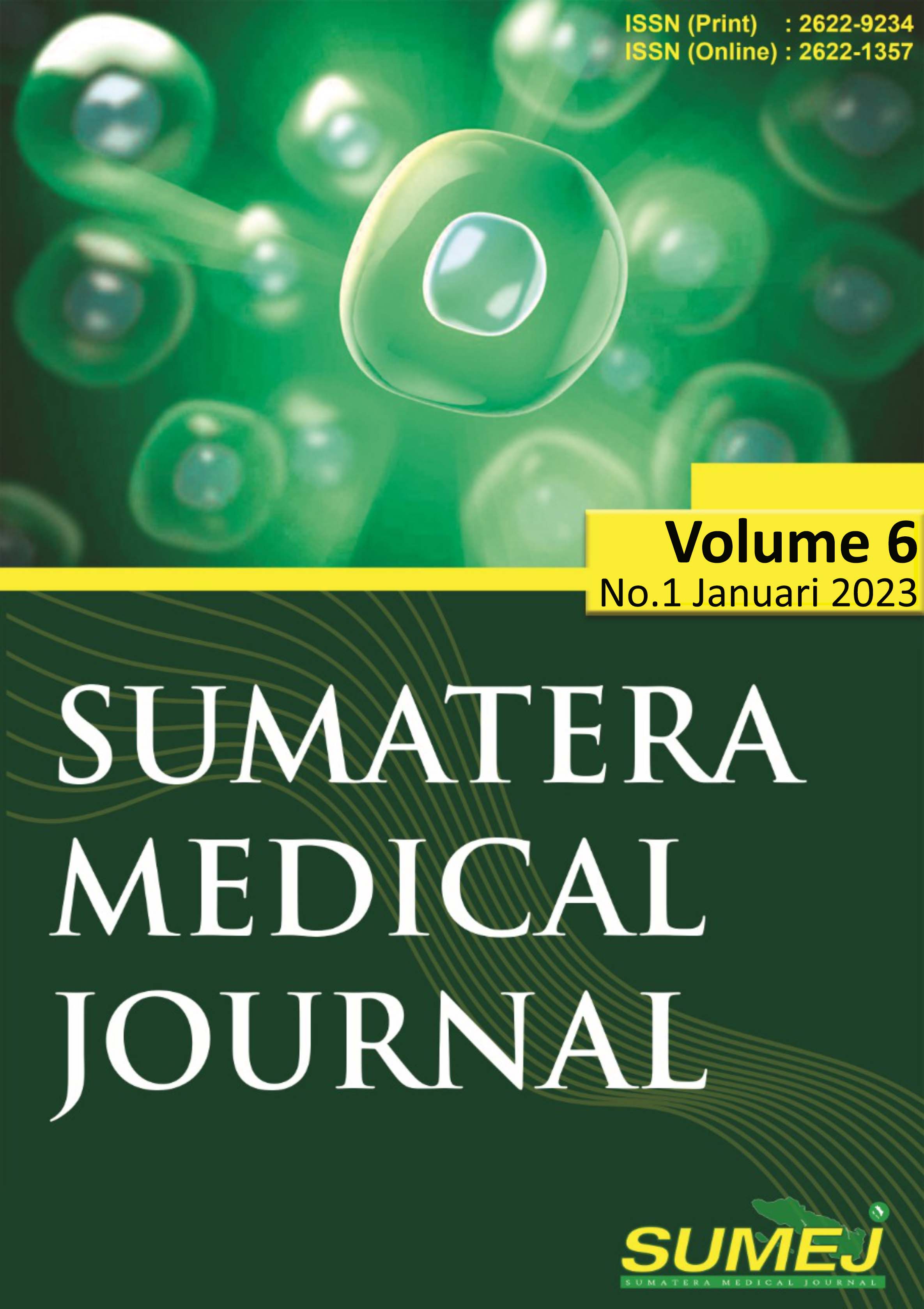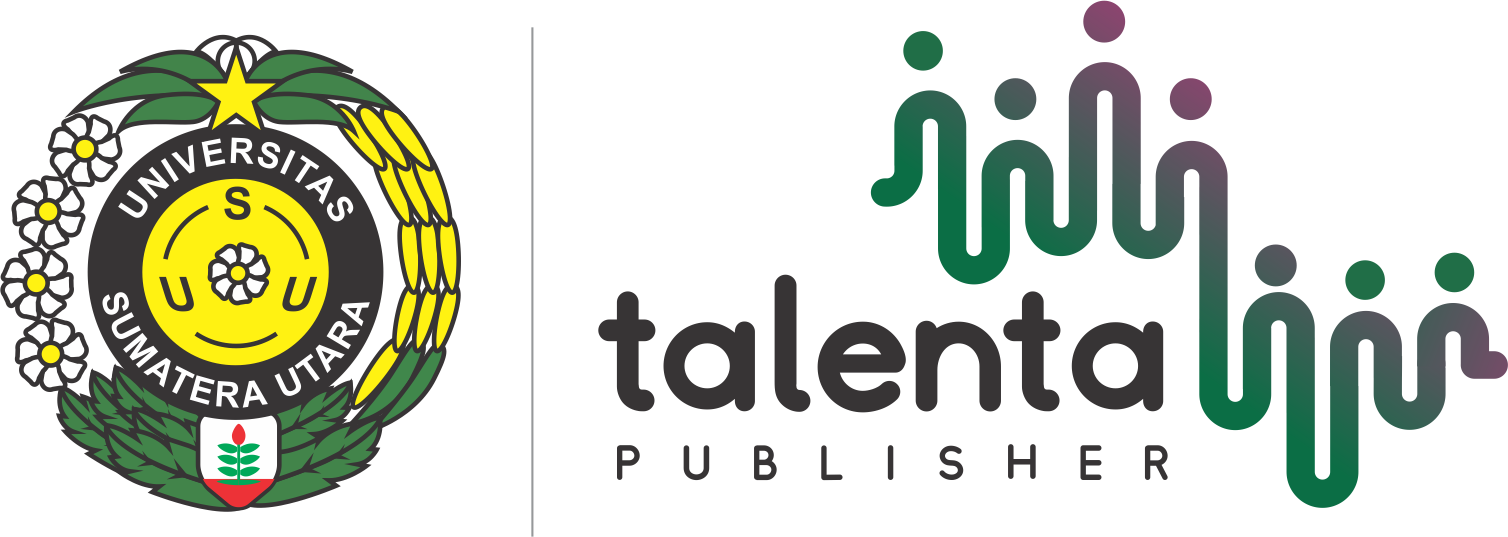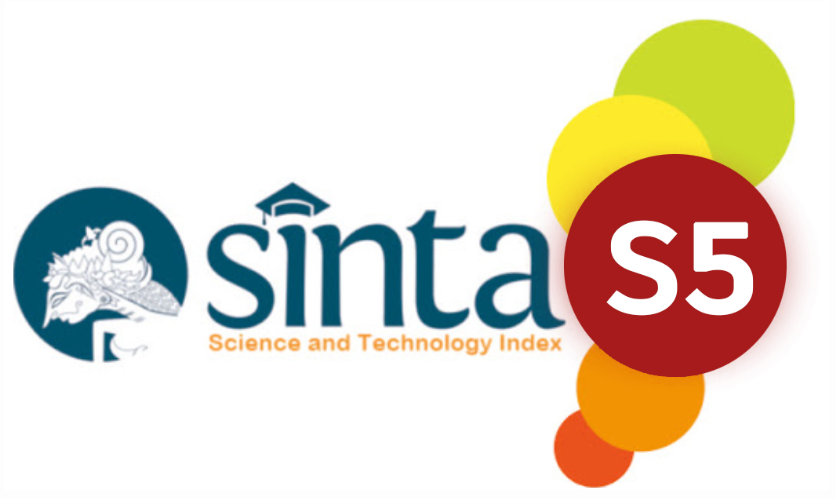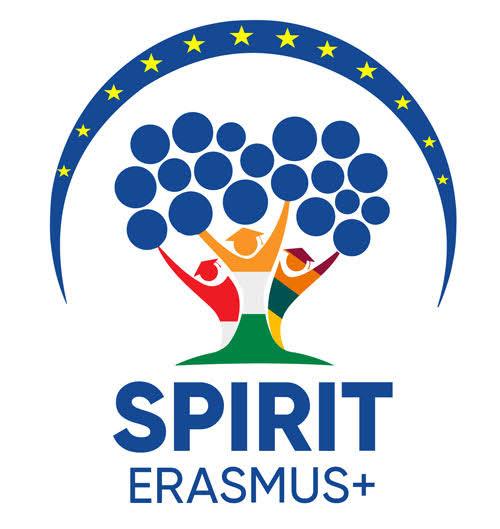Clinicopathological Characteristics of Invasive Breast Carcinoma on PDL-1 Immunohistochemical Expression in H. Adam Malik Hospital Medan
DOI:
https://doi.org/10.32734/sumej.v6i1.9061Keywords:
clinicopathology, invasive breast cancer, immunohistochemistry, PDL-1Abstract
Background: Immune biologic markers that can predict clinical response to anti-PD-1/PD-L1 therapy are needed to identify and validate tumor immunotherapy studies. High PD-L1 expression is associated with increased clinical response in patients with various types of cancer treated with inhibitors of the PD-1/PD-L1 pathway. Objective: The researcher wanted to see the clinicopathological characteristics of invasive breast carcinoma according to the immunohistochemical expression of PD-L1. Methods: This study is a descriptive study with a cross-sectional, retrospective approach by looking at secondary data from the medical records of the Department of Surgery, Haji Adam Malik Hospital from January 1, 2019, to December 31, 2021. Results: Immunohistochemical expression of PD- L1 was positive in 76.6% of invasive breast carcinomas and negative in 23.3% of invasive breast carcinomas. Immunohistochemical expression of PD-L1 was positive in non-specific IBCs that predominated in every molecular subgroup of breast carcinoma. Conclusion: Tumours can show positive or negative PD-L1 expression through several biological processes with different functional significance, namely the genetic mechanism of constitutive or oncogene-induced PD-L1 expression, PD-L1 expression induced in T cells, and absence of PD-L1 expression. Due to the absence of T cells and genetic events that block the expression of PD-L1 despite T cell infiltration.
Downloads
References
World Health Organization. Breast cancer: prevention and control [Internet]. Geneva: WHO; 2018 [cited 2025 Apr 21]. Available from: http://www.who.int/cancer/detection/breastcancer/en/.
AJCC. Cancer staging posters. AJCC; 2016 [cited 2025 Apr 21]. Available from: https://cancerstaging.org/references.
Andre F, Dieci MV, Dubsky P, Sotiriou C, Curigliano G, Denkert C, et al. Molecular pathways: involvement of immune pathways in the therapeutic response and outcome in breast cancer. Clin Cancer Res. 2013;19(1):28–33.
Sholl LM, Aisner DL, Allen TC, Beasley MB, Borczuk AC, Cagle PT, et al. Programmed death ligand-1 immunohistochemistry – a new challenge for pathologists. Arch Pathol Lab Med. 2016;140:341–4.
Wang Q, Liu F, Liu L. Prognostic significance of PD-L1 in solid tumors. Medicine (Baltimore). 2017;96(18):e6369.
Dong Y, Sun Q, Zhang X. PD-1 and its ligands are important immune checkpoints in cancer. Cancer Manag Res. 2017;8(2):2171–86.
Kumar V, Abbas AK, Aster JC. Neoplasia. In: Kumar V, Abbas AK, Aster JC, editors. Robbins and Cotran Pathological Basis of Disease. 9th ed. Philadelphia: Saunders; 2015. p.310–6.
Xue Q, Zhang G. Clinicopathological and prognostic value of Programmed Death Ligand-1 (PD-L1) in breast cancer: a meta-analysis. J Tumor Res. 2017;3:127.
Lakhani SR, Rakha S, Simpson PT, Pinder SE, Shin SJ, Tsuda H, et al. Special subtypes. In: Lakhani SR, Ellis IO, Schnitt SJ, Tan PH, Vijver MJ, editors. WHO classification of tumors of the breast. Lyon: IARC; 2012. p.40–76.
Arthur RS, Wang T, Xue X, Kamensky V, Rohan TE. Genetic factors, adherence to healthy lifestyle behavior, and risk of invasive breast cancer among women in the UK Biobank. J Natl Cancer Inst. 2020.
Ali HR, Provenzano E, Dawson SJ, Blows FM, Liu B, Shah M, et al. Association between CD8+ T cell infiltration and breast cancer survival in 12,439 patients. Ann Oncol. 2014;25(8):1536–43.
Alsaab HO, Sau S, Alzhrani R, Tatiparti K, Bhise K, Kashaw SK, et al. PD-1 and PD-L1 checkpoint signaling inhibition for cancer immunotherapy: mechanism, combinations, and clinical outcome. Front Pharmacol. 2017;8:561.
Latchman Y, Wood CR, Chernova T, Chaudhary D, Borde M, Chernova I, et al. PD-L2 is a second ligand for PD-1 and inhibits T cell activation. Nat Immunol. 2001;2(3):261–8.
Mangia A, Malfettone A, Simone G, Darvishian F. Old and new concepts in the histopathological characterization of familial breast cancer. Ann Oncol. 2011;22(1):24–30.
Miller RA, Cagle PT, Bernicker EH. First-line immune therapy-implications for the pathologist. Arch Pathol Lab Med. 2016;140:739–40.
Monneur A, Goncalves A, Bertucci F. Expression de PD-L1 et inhibition de la voie PD-1/PD-L1 dans le cancer du sein. Bull Cancer. 2018;105(3):263–74.
Reed AEM, Kutasovic JR, Lakhani SR, Simpson PT. Invasive lobular carcinoma of the breast: morphology, biomarkers and 'omics. Breast Cancer Res. 2015;17:12–23.
Schalper KA, Velcheti V, Carvajal D, Wimberly H, Brown J, Pusztai L, et al. In situ tumor PD-L1 mRNA suppression is associated with increased TILs and better outcome in breast carcinomas. Clin Cancer Res. 2014;20(10):2773–82.
Baptista MZ, Sarian LO, Derchain SF, Pinto GA, Vassallo J. Prognostic significance of PD-L1 and PD-L2 in breast cancer. Hum Pathol. 2016;47:78–84.
Mohammed ZM, Going JJ, Edwards J, Elsberger B, Doughty JC, McMillan DC. The relationship between inflammatory tumor cell infiltrate components and clinicopathological factors and survival in primary operable invasive ductal breast cancer patients. Br J Cancer. 2012;107(5):864–73.
Mohan H. Textbook of pathology. 6th ed. New Delhi: Jaypee Brothers Medical Publishers; 2010. Chapter 25, The breast; p.759–67.
Bardhan K, Anagnostou T, Boussiotis VA. The PD-1:PD-L1/2 pathway from discovery to clinical implementation. Front Immunol. 2016;7:550.
Schreiber RD, Old LJ, Smyth MJ. Cancer immunoediting: integrating immunity's roles in cancer suppression and promotion. Science. 2011;331(6024):1565–70.
Wong RM, Cameron RB. Immune checkpoint blockade and adaptive immune resistance in cancer. In: Metodiev K, editor. Immunotherapy – myths, reality, ideas, future. Croatia: Intech; 2017. p.47–61.
Wu P, Wu D, Li L, Chai Y, Huang J. PD-L1 and survival in solid tumors: a meta-analysis. PLoS One. 2015;10:e0131403.
Yu L, Tang J, Zhang C, Zeng W, Yan H, Li M, et al. New immunotherapy strategies in breast cancer. Int J Environ Res Public Health. 2017;14(1):68.
Zak KM, Grudnik P, Magiera K, Domling A, Dubin G, Holak TA. Structural biology of the immune checkpoint receptor PD-1 and its ligands PD-L1/PD-L2. Structure. 2017;25(8):1163–74.
Zhang M, Li G, Wang Y, Wang Y, Zhao S, Haihong P, et al. PD-L1 expression in lung cancer and its correlation with driver mutations: a meta-analysis. Sci Rep. 2017;7:10255.
Downloads
Published
How to Cite
Issue
Section
License
Copyright (c) 2023 Sumatera Medical Journal

This work is licensed under a Creative Commons Attribution-NonCommercial-NoDerivatives 4.0 International License.
The Authors submitting a manuscript do so on the understanding that if accepted for publication, copyright of the article shall be assigned to Sumatera Medical Journal (SUMEJ) and Faculty of Medicine as well as TALENTA Publisher Universitas Sumatera Utara as publisher of the journal.
Copyright encompasses exclusive rights to reproduce and deliver the article in all form and media. The reproduction of any part of this journal, its storage in databases and its transmission by any form or media, will be allowed only with a written permission from Sumatera Medical Journal (SUMEJ).
The Copyright Transfer Form can be downloaded here.
The copyright form should be signed originally and sent to the Editorial Office in the form of original mail or scanned document.











